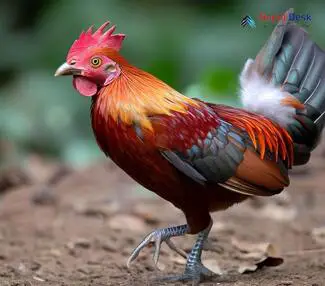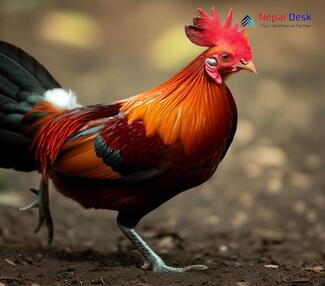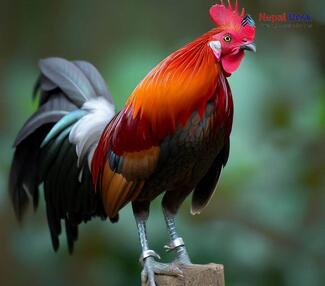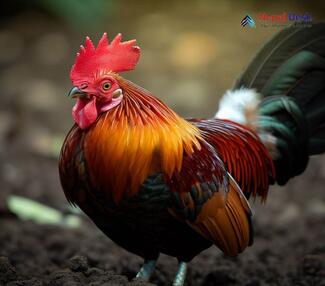The Red Junglefowl (Gallus gallus), a vibrant and resilient bird species, is not only admired for its striking appearance but also holds an essential position in the avian kingdom. As the wild ancestor of the domestic chicken, this intriguing bird has captivated researchers and bird enthusiasts alike. In this article, we will explore the key details of this fascinating species, as well as its presence in the breathtaking nation of Nepal.
Characteristics and Behavior of the Gallus gallus:
Red Junglefowl are medium-sized birds exhibiting sexual dimorphism, with males boasting a more prominent size and striking plumage. They have predominantly red and gold feathered bodies with hints of green, blue, and purple highlights. Males also flaunt their elaborate tail plumage and feature a scarlet comb atop their head.
Females are more subdued in coloration, with mottled brown feathers offering an excellent camouflage in their forest habitat. Their social structure revolves around small groups led by an alpha male, who fiercely defends his territory against rival males.
Feeding primarily on fruits, insects, seeds, and vegetation, these birds use their strong beaks to forage through undergrowth in search of a meal. As ground-living creatures, they have impressive flight abilities when escaping predators or roosting in trees at night.
The Call of the Wild: Vocalization Patterns
The Red Junglefowl is renowned for its distinct sound – the crowing of males is considered one of the most iconic animal calls worldwide. Males use this as a territorial signal to ward off rivals or attract females. Meanwhile, females communicate through various clucks and glucks to relay messages about food sources or potential threats.
The Gallus gallus in Nepal
Extending from India into Nepal, Bangladesh, and Sri Lanka, the Red Junglefowl has a wide geographical distribution. In Nepal, this species primarily inhabits Terai lowlands and foothills along the southern fringes of the country. Within Nepal's lush forests, wetlands, and grasslands, these birds find an ideal habitat with ample resources.
Conservation Efforts in Nepal
Although Red Junglefowl populations are not currently under significant threat, deforestation, and habitat destruction pose challenges to their survival. Moreover, hybridization with domestic chickens is another concerning factor affecting the pure genetic pool of this species.
Nepal has undertaken commendable efforts to conserve its rich biodiversity through protected areas such as Chitwan National Park and Bardia National Park. These initiatives ensure that remarkable species like Gallus gallus continue to thrive in their natural habitats.
In conclusion, the vibrant world of the Red Junglefowl is intertwined with human history, culture, and ecology. Its presence in Nepal showcases the splendid diversity of the region's landscapes and fauna. By understanding more about this fascinating bird species and promoting conservation efforts, we can preserve one of nature's most intriguing gems for future generations to enjoy.




